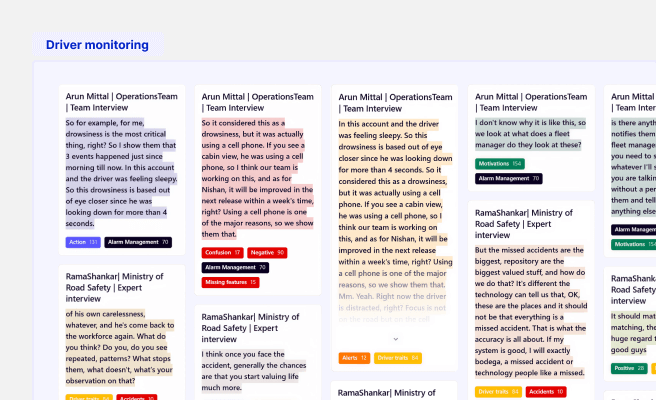Cross-Disciplinary Collaboration
<p>Cross-disciplinary collaboration is a crucial aspect of modern innovation, especially in the realm of digital design for climate tech. By bringing together experts from various fields, this collaborative approach can address complex environmental challenges more effectively. Such collaboration enables the integration of diverse perspectives, fostering creativity and yielding robust solutions.</p>
<p>Historically, cross-disciplinary collaboration has been instrumental in groundbreaking discoveries and innovations. For example, the fusion of environmental science, engineering, and digital design has led to the development of advanced carbon capture technologies, significantly reducing greenhouse gas emissions. This approach leverages the unique strengths of each discipline, resulting in more comprehensive and effective solutions.</p>
<p>The importance of cross-disciplinary collaboration cannot be overstated. It acts as a bridge connecting isolated islands of expertise, enabling a seamless exchange of ideas. This not only enhances problem-solving capabilities but also drives innovation. For instance, a study by <a href="https://www.jointhecollective.com/article/cross-disciplinary-collaboration-for-innovation/" style="color:#2896FF; text-decoration: underline;">Join The Collective</a> highlights how such collaboration is essential for fostering innovation, combining diverse perspectives to solve complex problems effectively.</p>
<h2>Components of Cross-Disciplinary Collaboration</h2>
<p>Effective cross-disciplinary collaboration involves several key components:</p>
<ul>
<li><strong>Communication:</strong> Clear and open communication is vital for understanding different perspectives and ensuring that all team members are on the same page.</li>
<li><strong>Shared Goals:</strong> Establishing common objectives helps align efforts and fosters a sense of unity among team members.</li>
<li><strong>Mutual Respect:</strong> Valuing each discipline's expertise and contributions is crucial for maintaining a positive and productive collaborative environment.</li>
<li><strong>Flexibility:</strong> Being open to new ideas and approaches allows for the integration of diverse perspectives, enhancing the overall outcome.</li>
</ul>
<h2>Benefits of Cross-Disciplinary Collaboration</h2>
<p>Engaging in cross-disciplinary collaboration offers numerous benefits:</p>
<p><strong>Enhanced Innovation:</strong> By combining diverse expertise, teams can develop innovative solutions that might not be achievable within a single discipline. For instance, the integration of digital design and climate science has led to the creation of user-friendly apps that monitor carbon footprints in real-time.</p>
<p><strong>Holistic Solutions:</strong> Addressing multifaceted problems, such as climate change, requires a comprehensive approach. Cross-disciplinary collaboration ensures that all aspects of a problem are considered, leading to more effective solutions.</p>
<p><strong>Improved Problem-Solving:</strong> Diverse perspectives can unveil different facets of a problem, facilitating a more thorough analysis and robust solutions.</p>
<h2>Challenges in Cross-Disciplinary Collaboration</h2>
<p>Despite its numerous benefits, cross-disciplinary collaboration also presents challenges:</p>
<p><strong>Cultural Differences:</strong> Different disciplines often have unique cultures and methodologies, which can lead to misunderstandings and conflicts. According to a review published by <a href="https://journals.sagepub.com/doi/full/10.1177/1046496419872002" style="color:#2896FF; text-decoration: underline;">SAGE Journals</a>, effective collaboration depends on managing these social aspects to ensure knowledge exchange.</p>
<p><strong>Communication Barriers:</strong> Variations in terminology and communication styles can hinder effective collaboration. Ensuring clear and consistent communication is crucial for overcoming these barriers.</p>
<p><strong>Resource Constraints:</strong> Collaborating across disciplines can be resource-intensive, requiring additional time, effort, and funding. However, the potential benefits often outweigh these challenges.</p>
<h2>Real-World Examples</h2>
<p>Several real-world examples highlight the success of cross-disciplinary collaboration:</p>
<p>In the healthcare sector, cross-disciplinary teams comprising doctors, nurses, and IT professionals have developed advanced telemedicine platforms that enhance patient care delivery. As discussed in the article by <a href="https://journalofethics.ama-assn.org/article/teamwork-health-care-maximizing-collective-intelligence-inclusive-collaboration-and-open/2016-09" style="color:#2896FF; text-decoration: underline;">AMA Journal of Ethics</a>, such collaboration maximizes collective intelligence, improving patient outcomes.</p>
<p>Another example is the development of smart agriculture technologies, where environmental scientists, engineers, and digital designers collaborate to create systems that optimize water usage and improve crop yields. These innovative solutions are crucial for addressing global food security challenges.</p>
<h2>Conclusion</h2>
<p>In conclusion, cross-disciplinary collaboration is vital for driving innovation and addressing complex challenges in digital design for climate tech. By fostering effective communication, mutual respect, and shared goals, teams can overcome the inherent challenges and reap the numerous benefits of this collaborative approach. Embracing cross-disciplinary collaboration will undoubtedly lead to more holistic and impactful solutions, driving progress in the fight against climate change.</p> <p>Increase user engagement that converts your demos into sales. Optimise your UX strategies with our audits.
<p>Fill out the <a href="https://tally.so/r/n97pxQ" style="color:#2896FF; text-decoration:underline;">UX Audit form</a> to get started. Ready to discuss your needs? <a href="https://cal.com/akhilak/what-if-design?duration=25" style="color:#2896FF; text-decoration:underline;">Book a consultation call</a> with us today.</p></p>

Let's scale your impact with great design.
Free consultation, no sales pitch
Thank you! Your submission has been received!
Oops! Something went wrong while submitting the form.
Let’s talk
Nothing great is built alone.
Let’s connect about your vision, our work and how we can collaborate.
Get in touch

